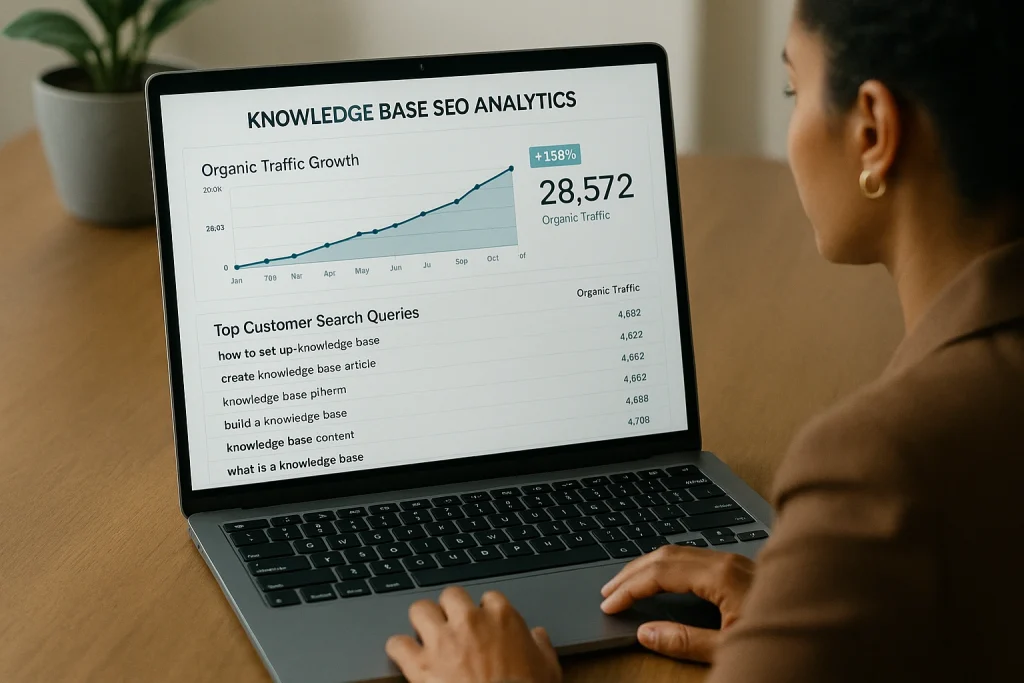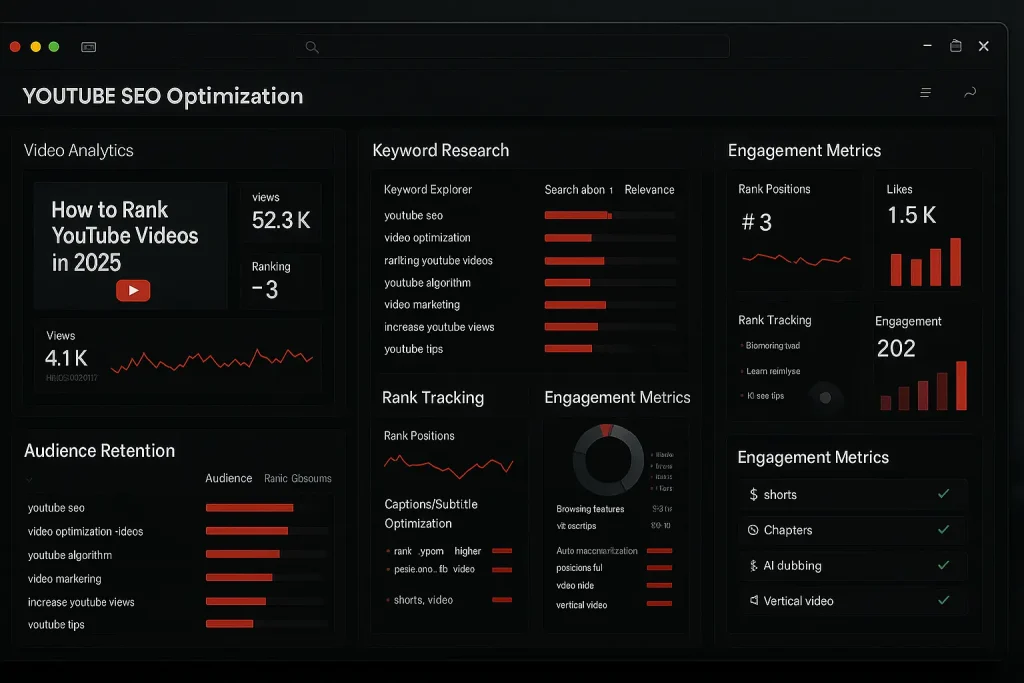Search did not get harder, it got faster and wider, and the teams that adapt win.
If you are chasing last year’s tactics, you are feeding your competitors. The landscape has shifted to AI Overviews, zero click answers, video results, social search, forums, and personalized feeds. That is good news, because most brands still treat SEO like 2018. We are not most brands. This is the field manual I actually use at The Hyper Fuel to ride the wave of SEO trends 2026 without losing the plot, traffic, or revenue.
The big shift, from one SERP to many surfaces
Google is still the highway, but discovery now happens on side roads too. AI results summarize. Featured snippets compress. Reddit threads rank. YouTube explanations jump the line. TikTok recipes outrun blog posts. Apple, Microsoft, and Meta ship their own answer engines. The practical takeaway is simple, distribute your expertise in the exact formats and places where people already consume it.
Why this matters, intent is fragmented. The same question shows up as a typed query, a voice request, a social search, or a chat prompt. Our plan mirrors that behavior. One story, many shapes.
AI Overviews and featured snippets, get cited or get skipped
If AI is answering above your result, you have two jobs, be the source and earn the click that follows. Structure content so machines can extract clean answers and humans can see your value in one glance. Do both.
How we format answer blocks
- Start with a one sentence answer, short, factual, written like a definition.
- Follow with a 3 to 5 step list. Each step is an action, one line, no fluff.
- Add one proof element, a number, a screenshot, a tiny case, a chart.
- Close with a follow up path, a deeper guide, a calculator, a template.
Trust signals that actually move the needle
- Real names with expert bylines, credentials, and contactable profiles.
- First hand evidence, original screenshots, proprietary data, experiments.
- Safety rails for YMYL topics, reviewer notes, disclaimers, references.
- Page hygiene, fast load, clean markup, clear headings, tidy URLs.
Do not stuff keywords. Write for a smart human, then mark it up for a smart crawler. That is how you earn citations inside AI results and reclaim clicks under them.
E-E-A-T that reads like the truth
Experience, expertise, authority, trust. Four plain words, one simple idea, make it obvious that you know this topic because you live it. Our approach is blunt.
- Show the hands, put your process in the article, with screenshots and raw notes.
- Put the expert first, the writer supports, the practitioner leads.
- Cluster deep, build topic trees where every branch links to a real asset.
- Add receipts, case studies, named clients, quotes, certifications, awards.
- Keep pages fresh, dates, deltas, what changed and why it matters.
If the web page reads like a lab notebook, you win trust. If it reads like brochure copy, you lose it.
Forums are the new front page
People trust people. That is why Reddit, Quora, and niche communities show in results. Treat them like satellite channels, not just traffic sources. Contribute first, promote second.
- Write helpful posts under real profiles, answer with proof, not pitches.
- Summarize your longer guides in comment sized chunks, then link sparingly.
- Track themes that spike, mirror them in your blog and video pipeline.
- Advertise only where threads already show purchase intent.
This is not about chasing karma, it is about meeting buyers where they ask, in the language they already use.
YouTube SEO and the video layer
Search is also watch and listen. When a how to query appears, video often wins. We build a paired content system, article plus video, published within a week of each other.
- Script outline from the blog, then record a clean 6 to 9 minute explanation.
- Open with a promise, show the result first, then walk through the steps.
- Use chapters, clear titles, natural keywords, and human thumbnails.
- Cross link, embed the video on the article, link the article in the video description.
Viewers become scanners, scanners become readers, readers become leads. That loop compounds.
Classic SEO still pays the bills
New channels are exciting, fundamentals still convert. Local landings, product category pages with short helpful copy, tidy internal links, and technically sound pages create the base that feeds the newer surfaces.
- Local, build one page per service per location, with unique proof and details.
- Category copy, 120 to 200 words of buyer focused context, plus FAQs.
- Internal links, pass context to clusters with descriptive anchors.
- Reviews and UGC, embed the voice of the customer near conversion points.
Smart teams do both, the shiny and the sturdy.
Zero click without zero value
Zero click searches are not the enemy. They are the top of a funnel you can still influence. If your content answers the question, leads with proof, and offers one high intent next step, you turn an answer box into brand memory and a later visit.
Practical moves,
- Target the featured snippet with a clean definition and a short list.
- Seed People Also Ask with subheadings that mirror common follow ups.
- Build summary modules that answer fast, then offer depth for the clickers.
- Use internal anchors so scrollers land on the exact section they wanted.
We do not chase every snippet. We pick the ones that surround buying paths.
AI tools, make the boring parts fast and the smart parts smarter
We use AI to do elbow work so humans can do judgment. That looks like this,
- Keyword research seed lists, clustered by intent and shaped by real queries.
- Outline drafts, then we inject expertise, receipts, and nuance.
- Technical QA sweeps, find broken links, thin pages, cannibalization.
- Outreach prep, find relevant sites and contacts, write first pass briefs.
The rule, if a task repeats, automate it. If a task decides, assign it to a human.
Personalized search, win by knowing your reader
Personalization reorders results based on behavior. You cannot game it, you can respect it. Build for segments, not one generic user. Let first party data shape topics, examples, and calls to action.
- Use CRM data to map common problems by industry and role.
- Tailor intros to the pain points that your buyers actually feel.
- Offer different depth for different readers, a skim path and a deep read.
Relevance is the real ranking factor you control.
Local SEO, show up where money changes hands
Local results feed calls, bookings, and foot traffic. Treat your Google Business Profile like a mini site.
- Keep hours, services, and attributes accurate.
- Post weekly updates and offers, answer questions in the feed.
- Add photos and short clips that look real, not staged.
- Ask for reviews after every successful service, then respond to all of them.
Pair that with location pages that prove you serve the area, neighbors, landmarks, directions, and work examples.
Social search, be findable in feeds
People search inside social apps for tutorials, recipes, and product picks. Optimize like you would for Google, but keep the vibe of the platform.
- Write native titles that answer an outcome, not a keyword.
- Use a small set of relevant hashtags, avoid spam stacks.
The goal is brand recognition, not just reach. Consistency builds recall.
Technical infrastructure, where revenue leaks or compounds
Speed, stability, and crawlability are not vanity metrics, they are conversion levers. If the site feels heavy, people bounce and budgets cry.
- Measure Core Web Vitals on real user data, not just lab tests.
- Trim bloat, compress images, lazy load, modern formats, fewer scripts.
- Fix broken links and orphan pages, clean internal redirects.
- Keep a clear URL structure and a fresh XML sitemap, with a tidy robots file.
Start with your money pages. Fix the places where a 1 percent lift equals real dollars.
Measure what matters, SEO ROI in plain math
Revenue in, spend out, decision made. Here is the simple formula,
SEO ROI = (Gain from SEO − Cost of SEO) ÷ Cost of SEO × 100
A quick example, you invest 5,000 a month and earn 30,000 in revenue tied to organic. That is 500 percent. Count everything in the cost model, salaries, agency fees, tools, content, dev. Track conversions in GA4 with values, tie revenue to organic sessions, not just last click if you have a longer cycle. Connect the dollars to the pages and keywords that cause them.
This is how you win budgets, with proof, not promises.
The SEO ROI scoreboard, 2026 priorities
High impact, sensible effort. That is the filter.
- Optimize for AI Overviews and featured snippets, High impact, high effort. Worth it.
- Strengthen E E A T signals, High impact, medium effort. Required.
- Target high intent keywords, High impact, medium effort. Where pipeline grows.
- Refresh aging content, Medium to high impact, low effort. Fast wins.
- Diversify into video and forums, Medium impact, medium to high effort. Future proofing.
- Fix critical technical issues, Medium to high impact, medium effort. Protects revenue.
Do these before you touch a full site restructure.
Six plays to prioritize this quarter
- Answer engine readiness
- Pick 10 buyer queries that already show AI results and snippets.
- Build or refresh pages with definition blocks, steps, and proof.
- Add expert bylines and reviewer notes where needed.
- High intent keyword push
- Map MOFU and BOFU terms to pages that can convert.
- Write short, clear copy and FAQs on category and service pages.
- Add comparison tables and calculators where buyers decide.
- Content refresh sprint
- Find decaying pages, update stats, examples, screenshots, and CTAs.
- Merge cannibalized posts into the strongest URL.
- Re submit in Search Console after changes.
- Video pairing program
- For every new guide, ship a 6 to 9 minute YouTube video.
- Use chapters, natural keywords, and honest thumbnails.
- Embed and interlink so both assets lift each other.
- Forum presence with receipts
- Answer real questions with steps and screenshots.
- Link only when your resource truly helps.
- Test ads on threads with buying signals.
- Technical clean up on money pages
- Fix Core Web Vitals and broken links on the top 20 revenue URLs.
- Remove heavy scripts and defer what you can.
- Tighten internal links so authority flows to priorities.
A 90 day plan you can run on Monday
Audit and aim
- Extract queries that already surface AI Overviews and snippets.
- Pull revenue by page from analytics, tag your top 20 URLs.
- Build a hit list of decaying pages and cannibalized clusters.
Build and fix
- Ship two answer ready pages a week, definition, steps, proof.
- Record one paired video a week, publish and embed.
- Fix Core Web Vitals on the top 10 money pages.
- Refresh and merge two decayed posts a week.
Distribute and tune
- Seed two Reddit or community contributions a week, helpful first.
- Post one LinkedIn story with a chart from your data.
- Add internal links from high traffic posts to BOFU pages.
- Expand FAQs based on People Also Ask and site search logs.
Measure and double down
- Report on assisted and direct conversions from organic.
- Note the pages that now show up in AI summaries and snippets.
- Reinvest in the plays that moved revenue, pause the rest.
You will ship a lot. You will learn faster than the market. That is the point.
Proof checklist and kill rules
Before any page ships, we check,
- Is there a clear one sentence answer and a short list that follows it.
- Does a real expert own the byline or review.
- Are there receipts, numbers, screenshots, or named examples.
- Does the page load fast and look clean on mobile.
- Is there one obvious next step for a buyer.
Kill a tactic when,
- It eats hours without moving a conversion metric.
- It creates duplicate pages or cannibalizes intent.
- It makes the site slower or harder to crawl.
Simple rules keep teams honest.
Wrap up, the unfair advantage is discipline
The best teams will treat SEO trends 2026 like a system, not a scramble. They will answer cleanly, prove experience, spread ideas across surfaces, and measure dollars, not vanity. Do that for a quarter and you will feel the momentum. Do it for a year and you will build a moat.
If you want a partner that builds engines, not reports, say hello to The Hyper Fuel.




